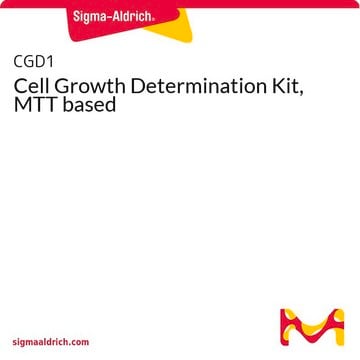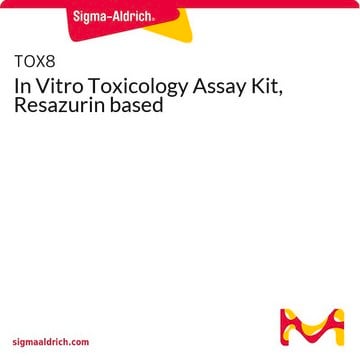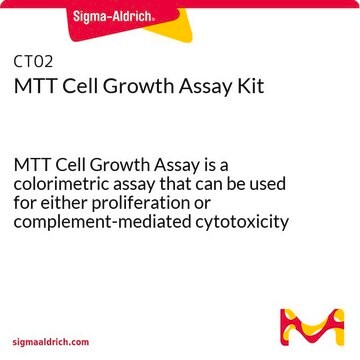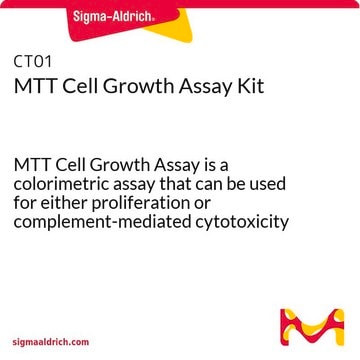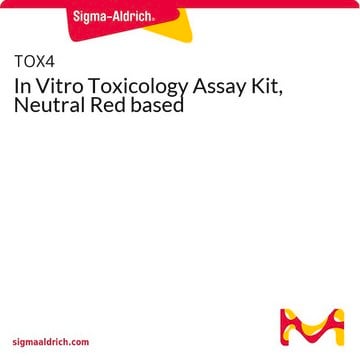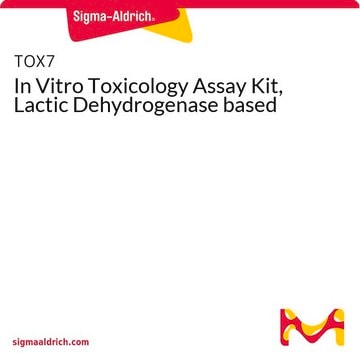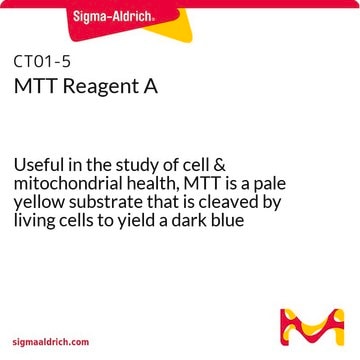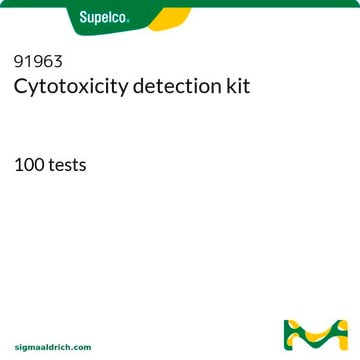TOX1
In Vitro Toxicology Assay Kit, MTT based
Sinónimos:
mitochondrial activity assay
About This Item
Productos recomendados
uso
1 kit sufficient for 1,000 tests
envase
pkg of 1 kit
condiciones de almacenamiento
dry at room temperature
λmáx.
570 nm
aplicaciones
cell analysis
detection
método de detección
colorimetric
temp. de almacenamiento
2-8°C
Descripción general
Aplicación
Acciones bioquímicas o fisiológicas
Producto relacionado
Palabra de señalización
Danger
Frases de peligro
Consejos de prudencia
Clasificaciones de peligro
Aquatic Acute 1 - Aquatic Chronic 2 - Eye Dam. 1 - Flam. Liq. 2 - Muta. 2 - Skin Corr. 1 - STOT SE 3
Órganos de actuación
Central nervous system, Respiratory system
Código de clase de almacenamiento
3 - Flammable liquids
Punto de inflamabilidad (°F)
53.6 °F
Punto de inflamabilidad (°C)
12 °C
Elija entre una de las versiones más recientes:
¿Ya tiene este producto?
Encuentre la documentación para los productos que ha comprado recientemente en la Biblioteca de documentos.
Los clientes también vieron
Artículos
Quality control guidelines to maintain high quality authenticated and contamination-free cell cultures. Free ECACC handbook download.
Quality control guidelines to maintain high quality authenticated and contamination-free cell cultures. Free ECACC handbook download.
Quality control guidelines to maintain high quality authenticated and contamination-free cell cultures. Free ECACC handbook download.
Quality control guidelines to maintain high quality authenticated and contamination-free cell cultures. Free ECACC handbook download.
Nuestro equipo de científicos tiene experiencia en todas las áreas de investigación: Ciencias de la vida, Ciencia de los materiales, Síntesis química, Cromatografía, Analítica y muchas otras.
Póngase en contacto con el Servicio técnico